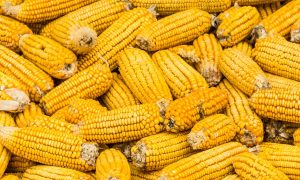IGC revises maize production lower

LONDON, ENGLAND — Worsening maize (corn) prospects in the Southern Hemisphere has reduced the global production outlook for total grains, according to the International Grain Council’s most recent Grain Market Report.
The monthly report, released March 14, revised 2023-24 wheat and coarse grains production lower by 6 million tonnes. However, the forecast 2.304 million tonnes would be 2% higher than the 2022-23 total due to year-on-year increases in global maize and sorghum output.
While down 7 million tonnes from the February projection, maize production is seen increasing by nearly 6% year-on-year to 1.227 billion tonnes. In its first forecast for the 2024-25 marketing year, the IGC projects a further increase in maize output to 1.233 billion tonnes.
The IGC’s production forecast for wheat held steady at 789 million tonnes from the previous month but is nearly 2% lower than last year’s total. The IGC pegs 2024-25 output at 799 million tonnes.
Total grains consumption in 2023-24 was revised lower by 11 million tonnes from the February forecast, to 2.306 billion, the IGC said, mainly due to a 10-million-tonne drop in maize uptake. However, global consumption for both maize and wheat are projected significantly higher than 2022-23, and combined consumption of the two grains is expected to increase by 25 million tonnes in 2024-25.
With uptake continuing to rise on an annual basis, total grains carryover stocks are projected to fall to an eight-season low of 599 million tonnes in 2023-24.
The report showed global soybean production rising to a record 390 million tonnes this year and making another significant jump in 2024-25 to 413 million tonnes. However, soybean consumption will continue to rise at a similar rate this year and next, the IGC said.The IGC’s Grains and Oilseeds Price Index (GOI) was virtually unchanged from the February report but prices are down 21% from a year ago, with maize declining by nearly 32%.
Source Link : https://www.world-grain.com/articles/19744-igc-revises-maize-production-lower
















